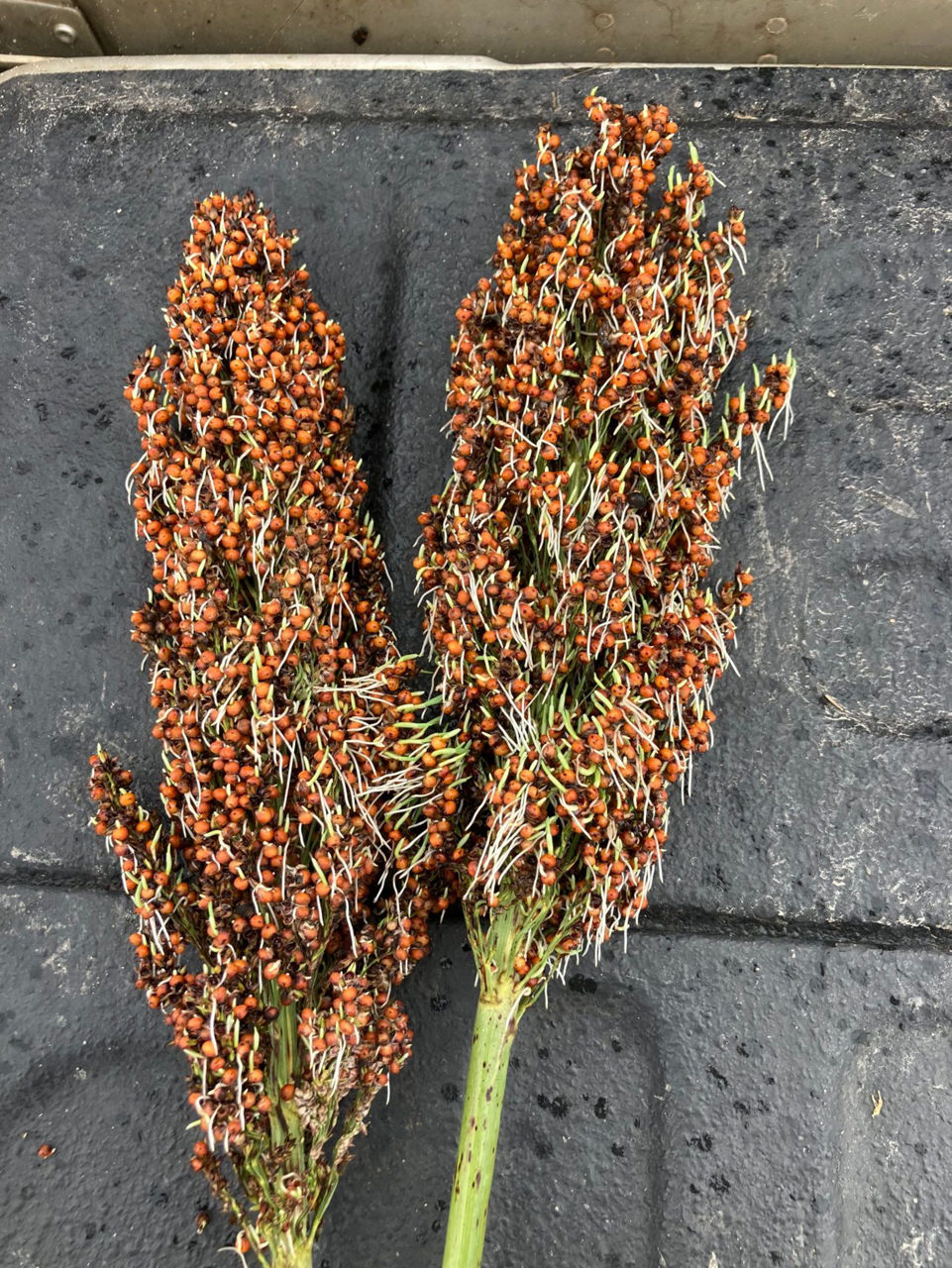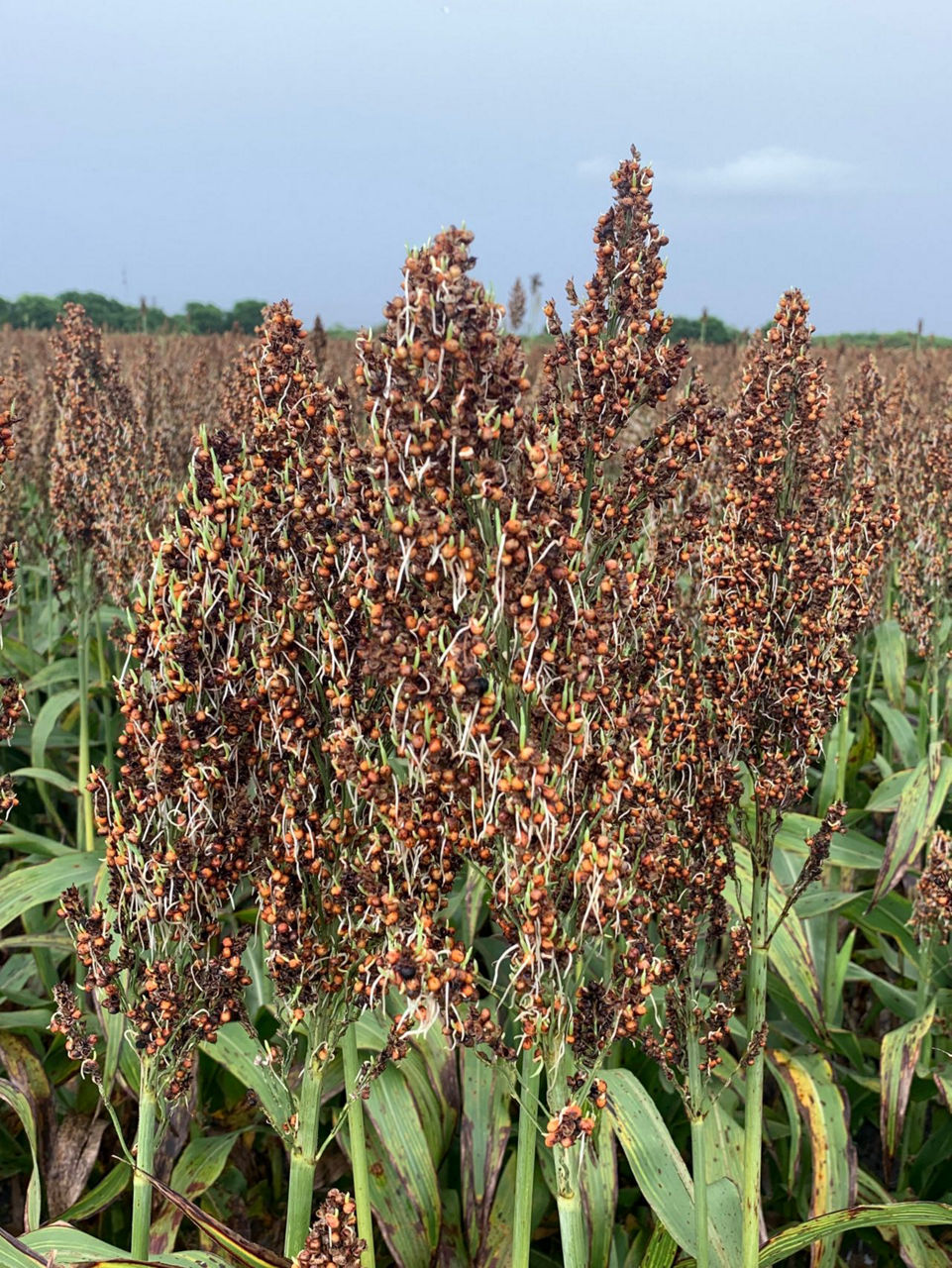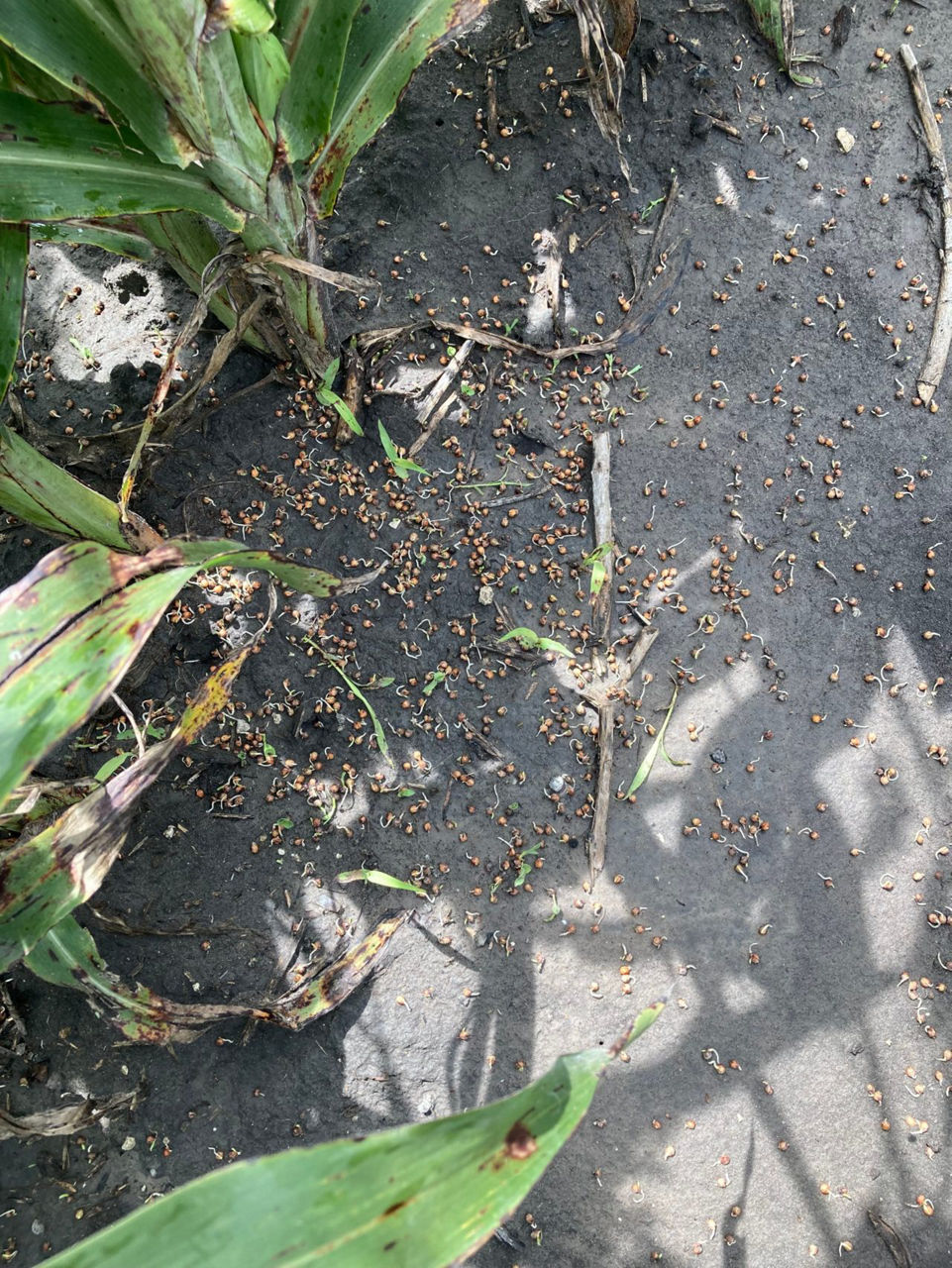Pre-Harvest Grain Sorghum Sprouting and Management Recommendations
August 12, 2021
Prolonged rainfall following a period of dry weather can result in sprouting of grain sorghum (Figure 1). Conditions conducive for pre-harvest sprouting are extended rainfall, high humidity, high temperatures and concurrent alternate periods of wetting and drying that last for several consecutive days. Precipitation, relative humidity, temperature and wind have the greatest impact on the degree of sprouting.

Figure 1. Pre-harvest sprouting of grain sorghum, note the white radicles and green coleoptiles.
When scouting for pre-harvest sprouting, the percentage of grain that has been affected can be overestimated. To help reduce overestimation, inspect the entire head as there can be differences in sprouting along the head. Often the head will appear black as though it is infected with mold. However, the black color is related to the glumes which surround the seed. When the seed begins to sprout, the root radicle pushes the kernel out of its normal position within the glumes and falls to the ground. These exposed glumes, which are typically a reddish-purple color, contribute to the black appearance (Figure 2). Another impact of prolonged wet conditions is grain shattering, which can occur with or without sprouting (Figure 3).

Figure 2. Note the black appearance of the head, as a result of kernel shattering.

Figure 3. Shattered grain sorghum kernels.
What is pre-harvest sprouting and how does it affect the grain?
Sprouting occurs when the white radicle protrudes from the seed. If wet weather continues, the green coleoptile can also be observed. If the rain stops and the head dries down, then the radicle and coleoptile dry-down and become unnoticeable, unless closely examined.
Sprouted kernels can be discolored and have a weathered appearance. The endosperm can appear chalky because of the breakdown of starch and protein during the sprouting process. In addition to shattering, sprouting can result in lower grain quality grades and test weight. Mycotoxins may also become a concern if mold infects the head. Sprouted sorghum can thresh “harder” with a higher trash load, fines and broken kernels. While weathered or sprouted kernels can be lower quality in appearance, affected kernels have been found to be only slightly less in nutritive quality when compared to non-weathered grain.
The major economic impact of pre-harvest sprouting is the reduction in grade. To qualify for U.S. grade number 2, no more that 5% of the kernels can be damaged. If more than 15% of the kernels are damaged, the sample falls out of grade and is heavily discounted. Interestingly, in areas where grain sorghum can be used as an ethanol feedstock, sprouted grain sorghum has been found to be superior to un-sprouted grain by increasing ethanol production.
What management tactics can be used to reduce the impact?
Nothing can prevent pre-harvest sprouting if the weather conditions are conducive; however, there are management tactics that can help lessen the impact after sprouting occurs. Harvest as soon as weather conditions permit. A harvest desiccant can be used if over 60% of the grain in the field has some brown or red color indicating the beginning of maturity. If the grain is from a white or yellow product, examine the grain at the top of the head and use a desiccant if 60% of the plants have hard kernels. The desiccant kills the sorghum plant and any sprouted kernels to help prevent further deterioration of the grain and hasten harvest. Plants that have green kernels that are in the milk or soft dough stage will dry down and turn color allowing them to be harvested. This can result in smaller kernels and a lower yield but helps avoid losing more grain through shattering.
If less than 60% of the plants in field have kernels that are maturing, a desiccant should not be applied, but wait for drying weather. This is because the loss from the sprouted grain should be less than the loss from terminating the immature grain. In this situation, the loss of the sprouted grain or the reduction of grain quality is a small loss compared to the loss of kernel weight in the immature plants.
Does the sorghum product have an impact on pre-harvest sprouting?
Yes. Grain maturity is the major factor; however, it is the stage of maturity in relation to the weather condition or events associated with pre-harvest sprouting. In other words, a product may not be impacted with pre-harvest sprouting one year, but heavily impacted the next year.
Sources
Heiniger, R. 2015. Sprouting damage and harvest management in sorghum. North Carolina State University Extension. https://www.ncsu.edu/.
Bean, B. 2020. Pre-harvest sprouting and weathering of sorghum grain. United sorghum checkoff program. https://www.sorghumcheckoff.com/news-and-media/newsroom/2020/11/30/pre-harvest-sprouting-and-weathering-of-sorghum/
6023_Q1